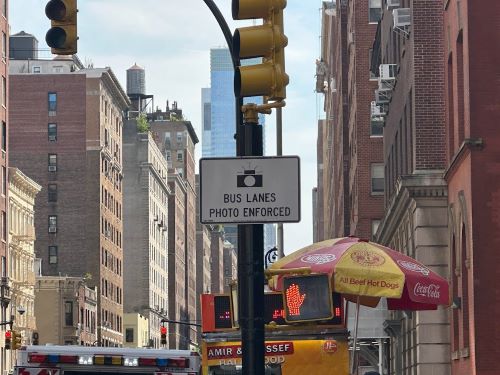Traffic laws have historically been enforced by human law enforcement officers out in the field, observing violations and assigning citations. There is a push to change that by automating traffic enforcement via cameras. These high-tech systems are being implemented, and challenged, in cities throughout our country. Let’s take a look at some of this technology and the pros and cons associated with it.

How Automated Traffic Cameras Work
Red light cameras have been in use in the US since the 1980s, and most of us are familiar with them at this point. However, automated traffic cameras go far beyond just detecting who is running red lights. This technology includes:
- Speed Cameras
- School Zone Cameras
- Work Zone Cameras
- Stop Sign Cameras
- HOV Lane Cameras
- Bus Lane Cameras
Other automated traffic cameras are being developed and introduced as well. Once a violation is detected by one of these cameras, the automated system will generate a citation which is then mailed to the owner of the vehicle.
The Benefits of Automated Traffic Enforcement
There are many benefits of automated traffic enforcement. A big one is a reduced chance of biased or selective enforcement by law enforcement officers. Automated cameras apply traffic laws uniformly without assessing details about the driver. Automated traffic enforcement also frees up officers so they can focus on more critical and hands-on law enforcement tasks. Cameras are an efficient way to enforce traffic laws.
Controversies and Concerns
While the benefits are clear, there are still many controversies surrounding automated traffic enforcement. One of the biggest concerns is privacy concerns. Many people do not like the idea of being surveyed in this way. And like all technology, there is room for error, which could lead to wrongful citations. Some people think that the cameras are just a way to increase revenue by generating more citations. This is an ongoing debate in many communities.
What Drivers Need to Know
It seems clear that the future of traffic law enforcement is heading towards automation. This means that drivers need to be aware that their chances of being ticketed for traffic offenses are high. Drivers should be prepared for potential fines. If you share a car with another person, understand that the ticket will go to whoever the vehicle is registered to, and you may be responsible for someone else’s poor driving decisions.
While the debate around automated traffic enforcement is ongoing, it’s important to stay informed about the latest advancements in this technology and how it impacts you as a driver.
Interested in learning more about traffic safety?
Are you looking for defensive driving and traffic school courses? Do you want a discount on your auto insurance? Do you know a teen who’s ready to take an online driver education course?
Safe2Drive is here to help! We offer convenient online courses for drivers of any age! Visit our website today to learn about the online courses we offer in your state.
Traffic laws have historically been enforced by human law enforcement officers out in the field, observing violations and assigning citations. There is a push to change that by automating traffic enforcement via cameras. These high-tech systems are being implemented, and challenged, in cities throughout our country. Let’s take a look at some of this technology and the pros and cons associated with it.